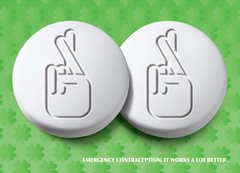- Strengthening programs to develop girls’ personal and social power.
- Enhancing the connections among girls and women's organizations thus spinning off a young women’s movement.
- Promoting the visibility of girls’ issues and increased funding for girls' programs.
We believe that women’s empowerment is central for achieving long-term sustainable development. Unfortunately, it has rarely been the primary focus of development programs.
The long-term goal of the Girls Empowerment Initiative at the Pacific Institute for Women’s Health is to catalyze a new generation of empowered women who will become actors for social change. We believe that working with adolescent girls is the most effective and efficient strategy to achieve this. By adolescence, girls are able to think critically and have also begun to experience the restrictions of gender-based discrimination and limitations in their daily lives. They are struggling to cope with those limitations, and eager to see their gut feelings acknowledged, whether they are about discrimination and its effects on them, or how wrong and unfair social norms are. Girls are hoping to find mentors and role models that can help them find alternatives, and that can inspire them in choosing to fight for their rights. They typically embrace the opportunity to become agents of change in their own lives and in their societies.
Empowerment refers to the expansion in one’s ability to make strategic life choices and the results of actually doing so.[i] Therefore, to be empowered a woman must have and use personal agency. Our work focuses on integrating specific mechanisms to develop and reinforce personal and social agency into programs for girls. While specific program components may vary, core components include:
- Health and Security
- Leadership, Voice and Rights
- Social Mobility
- Education
- Economic Opportunity
Our work on girl’ empowerment seeks to:
- Develop, pilot, document and evaluate new empowerment methodologies and curricula, which incorporate and assess a set of core programmatic elements;
- Increase the capacity of social-change organizations to conduct programs that empower girls, including strengthening their curriculum development and training skills;
- Challenge the status quo image of girls as sex objects and develop a positive image of empowered girls.
- Increase the ability of the participants to document their experiences and use them for advocacy.
We seek to show policymakers the importance and feasibility of girls’ empowerment programs, and how gender equality can be addressed on the ground. By carefully documenting and evaluating the process used on the ground, we ensure that program activities can be replicated, adapted and further developed by other partners, and eventually scaled up.
[i] Naila Kabeer, 2001.


